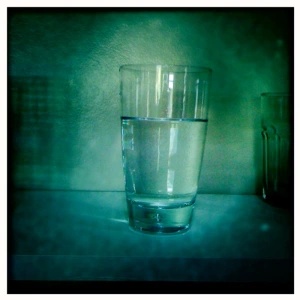Category 4
Category 3
Category 2
Category 1
We specialize in elevating content creators like you through bespoke social media strategies that not only capture attention, but also drive engagement.
Stride Social
Welcome to
Water is colorless. In the virtual world of water footprints water has been assigned the colors blue, green and grey. Water sourced from ground water, reservoirs, and rivers that scribble across the landscape is considered blue water. Rain water is green water. Grey water is water that has been tainted with pollutants. I hunt for foods grown with green water and minimal grey water to serve at my kitchen table.  The lack of information on labels makes it a challenge to know the color of water used to produce food. Take wheat for example, it is anonymous once dumped into food elevators. This became apparent on a recent phone conversation. “What brands use North Dakota wheat” I asked Erica Olson with the North Dakota Wheat Commission. “Outside of our own North Dakota Brands like Dakota Growers and Dream Fields I don’t know who purchases our wheat,” she answered. There is a high probability that North Dakota wheat is inside the boxes of pasta, loaves of bread and bags of flour in your pantry as they grow half of all wheat sold in the U.S. Food label are only required to list the country of orgin not the state or region. I learned from Erica that the amber waves of grain from North Dakota are grown with 100% green water. Not all wheat in the United States is rain fed. In my home state of California, wheat fields utilize high rations of blue water. Alas, even in the dry state of California farmers grow wheat with green water.
The lack of information on labels makes it a challenge to know the color of water used to produce food. Take wheat for example, it is anonymous once dumped into food elevators. This became apparent on a recent phone conversation. “What brands use North Dakota wheat” I asked Erica Olson with the North Dakota Wheat Commission. “Outside of our own North Dakota Brands like Dakota Growers and Dream Fields I don’t know who purchases our wheat,” she answered. There is a high probability that North Dakota wheat is inside the boxes of pasta, loaves of bread and bags of flour in your pantry as they grow half of all wheat sold in the U.S. Food label are only required to list the country of orgin not the state or region. I learned from Erica that the amber waves of grain from North Dakota are grown with 100% green water. Not all wheat in the United States is rain fed. In my home state of California, wheat fields utilize high rations of blue water. Alas, even in the dry state of California farmers grow wheat with green water.
One such farm is With the Grain Farm, in Paso Robles, California, owned by John DeRosier (http://withthegrain.org/). John is a dry farmer. His and surrounding farms use wells to tap ground water supplies. The wells act like big straws, sucking up water to irrigate crops. John’s well digs 300 feet deep. It maintains the same level as it did when it was drilled 60 years ago. The surrounding vineyards dig 1000 feet beneath the surface.
The day I visited John’s farm the rain was imminent. Rain is not frequent in Paso Robles. His farm receives on average six inches a year. The summers reach 110 degrees Fahrenheit. “How is it that you are able to dry farm and the farms around you are using ground water?” I asked as he led me down the slope to a patch of clumpy grass, legumes and peas bloom with flowers. “This is where the elegance of the biodynamic farm begins,” he smiled.
He is informed by biodynamic farming methods introduced by Rudolph Steiner nearly 90 years ago. Using biodynamic techniques, he captures millions of gallons of rain water in the soil of his farm. John grows over 20 varieties of wheat on his 100 acres of leased land scattered throughout Paso Robles County. This is in addition to barley, rye and oats. Once harvested this summer, wheat will be available to his CSA members (Community Supported Agriculture). This year his members will feast on pasta, bread and tortillas from wheat milled from his farm. Water conservation on small and large farms occurs throughout the United States. I continue to seek farms and food producers that rely more heavily on green water and share them in these pages.
Leave a Reply to Kate Jill Cancel reply
Ready to take Action?

My respect of water is deepening. I never thought of what “color” water my pasta and bread were made from. Now I will. Thanks for reminding me to eat less water everyday!
Very informative. It’s good to know there are farmers out there trying to do the right thing.
[…] has a water footprint of 101 gallons. The difference is these are green eggs and tea. Remember the colors of water? The eggs are from my backyard chickens. I know exactly what they eat, some grass from the yard […]
Water does have a color. In certain situations, it depends. http://www.whyiswaterblue.com And some others will explain.
Thanks for the information and link to a site that explains the complex and magical dance between water and light that yields color.